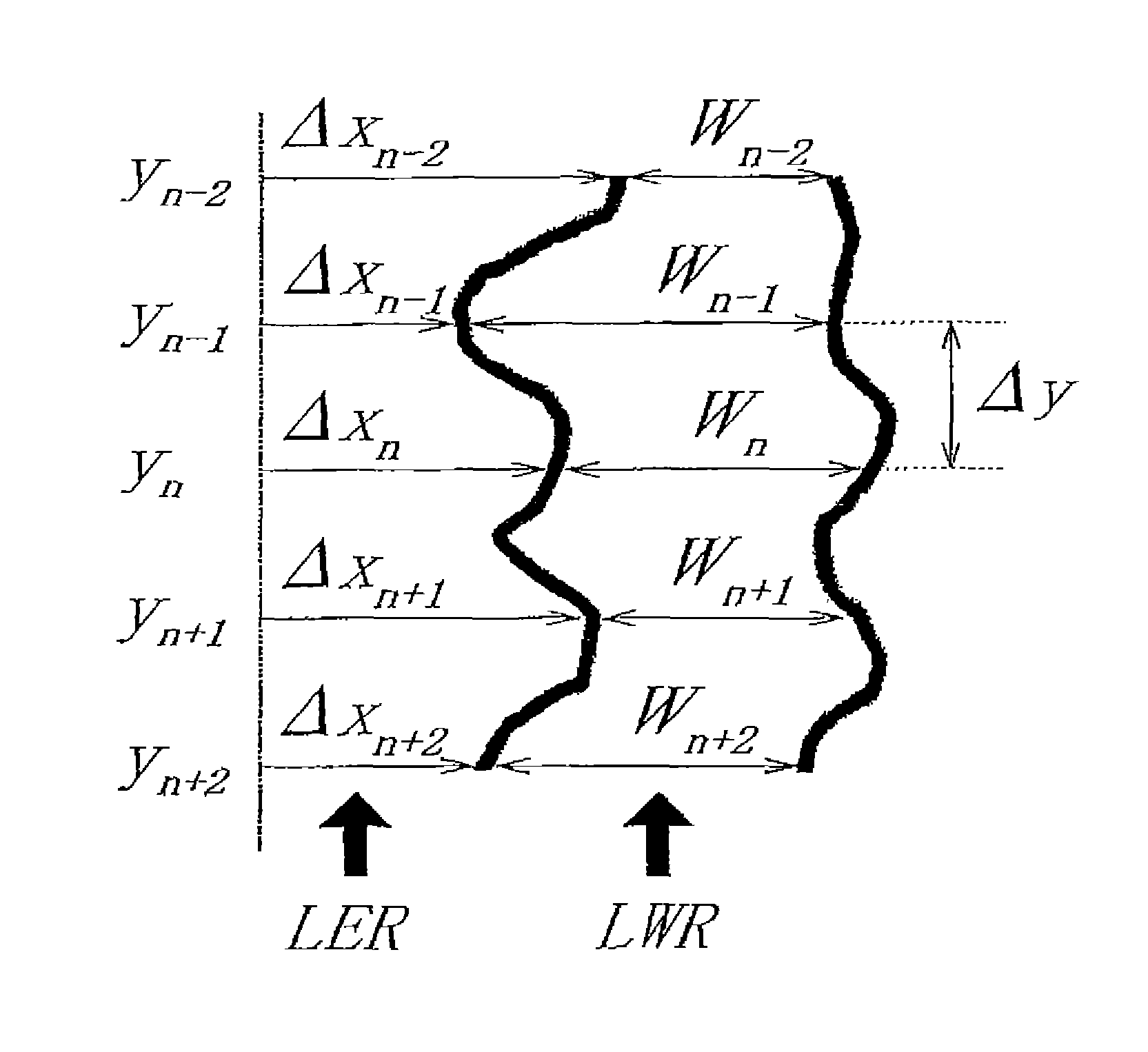Silicon-containing resist underlayer film forming composition having fluorine-based additive
a technology of underlayer film and composition, which is applied in the direction of photosensitive materials, semiconductor/solid-state device details, instruments, etc., can solve the problems of large influence of active ray reflection on the semiconductor substrate, and achieve satisfactory dry etching resistance and satisfactory function.
- Summary
- Abstract
- Description
- Claims
- Application Information
AI Technical Summary
Benefits of technology
Problems solved by technology
Method used
Image
Examples
synthesis example 1
Synthesis of Fluorine-Containing Highly Branched Polymer-1 (F Polymer-1)
[0246]Into a reaction flask, 16 g of toluene was charged and while toluene was stirred, nitrogen was flowed into the flask for 5 minutes, followed by heating the flask until the internal liquid was refluxed (to a temperature of about 110° C.).
[0247]Into another four-neck flask, 1.2 g (5 mmol) of MAIB, 2.1 g (5 mmol) of C6FA, 1.5 g (5 mmol) of TESMA, 2.0 g (10 mmol) of EGDMA, and 16 g of toluene were charged and while the resultant reaction mixture was stirred, nitrogen was flowed into the four-neck flask for 5 minutes to purge the inside of the four-neck flask with nitrogen, followed by cooling down the reaction mixture to 0° C. in an ice bath.
[0248]Into the above toluene under heating to reflux, the toluene solution dissolving EGDMA, C6FA, TESMA, and MAIB was dropped using a dropping pump over 30 minutes. After the completion of dropping, the resultant reaction mixture was aged for 1 hour.
[0249]Then, from the r...
synthesis example 2
Synthesis of Fluorine-Containing Highly Branched Polymer-2 (F Polymer-2)
[0251]Into a reaction flask, 32 g of toluene was charged and while toluene was stirred, nitrogen was flowed into the flask for 5 minutes, followed by heating the flask until the internal liquid was refluxed (water bath temperature: 110° C. or more).
[0252]Into another four-neck flask, 2.3 g (10 mmol) of MAIB, 4.2 g (10 mmol) of C6FA, 2.9 g (10 mmol) of TESMA, 1.0 g (6 mmol) of GBLMA, 4.0 g (20 mmol) of EGDMA, and 32 g of toluene were charged and while the resultant reaction mixture was stirred, nitrogen was flowed into the four-neck flask for 5 minutes to purge the inside of the four-neck flask with nitrogen, followed by cooling down the reaction mixture to 5° C. in an ice bath.
[0253]Into the above toluene under heating to reflux, the toluene solution dissolving C6FA, TESMA, GBLMA, EGDMA, and MAIB was dropped using a dropping pump over 30 minutes. After the completion of dropping, the resultant reaction mixture w...
synthesis example 3
Synthesis of Fluorine-Containing Highly Branched Polymer-3 (F Polymer-3)
[0256]Into a reaction flask, 32 g of toluene was charged and while toluene was stirred, nitrogen was flowed into the flask for 5 minutes, followed by heating the flask until the internal liquid is refluxed (water bath temperature: 110° C. or more).
[0257]Into another four-neck flask, 2.3 g (10 mmol) of MAIB, 4.2 g (10 mmol) of C6FA, 2.9 g (10 mmol) of TESMA, 1.7 g (10 mmol) of GBLMA, 4.0 g (20 mmol) of EGDMA, and 32 g of toluene were charged and while the resultant reaction mixture was stirred, nitrogen was flowed into the four-neck flask for 5 minutes to purge the inside of the four-neck flask with nitrogen, followed by cooling down the reaction mixture to 5° C. in an ice bath.
[0258]Into the above toluene under heating to reflux, the toluene solution dissolving C6FA, TESMA, GBLMA, EGDMA, and MAIB was dropped using a dropping pump over 30 minutes. After the completion of dropping, the resultant reaction mixture w...
PUM
| Property | Measurement | Unit |
|---|---|---|
| temperature | aaaaa | aaaaa |
| temperature | aaaaa | aaaaa |
| temperature | aaaaa | aaaaa |
Abstract
Description
Claims
Application Information
 Login to View More
Login to View More - R&D
- Intellectual Property
- Life Sciences
- Materials
- Tech Scout
- Unparalleled Data Quality
- Higher Quality Content
- 60% Fewer Hallucinations
Browse by: Latest US Patents, China's latest patents, Technical Efficacy Thesaurus, Application Domain, Technology Topic, Popular Technical Reports.
© 2025 PatSnap. All rights reserved.Legal|Privacy policy|Modern Slavery Act Transparency Statement|Sitemap|About US| Contact US: help@patsnap.com



